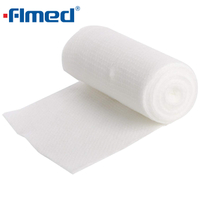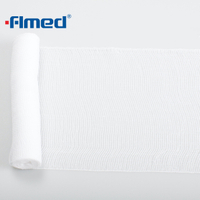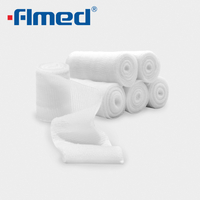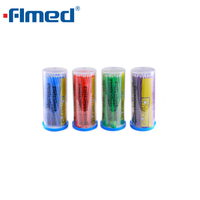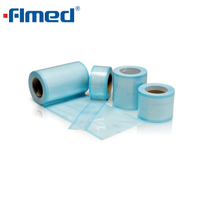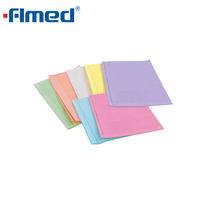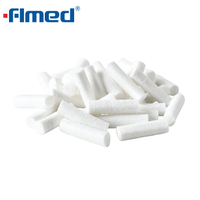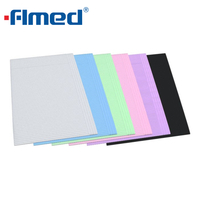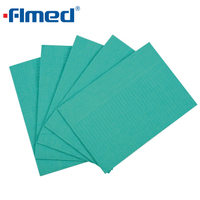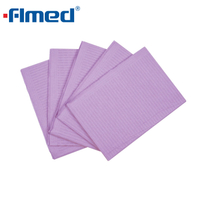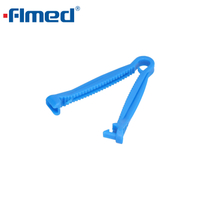
Infection control is a critical aspect of maintaining a clean and safe environment, particularly in high-traffic areas such as hospitals, clinics, and other healthcare facilities. One often overlooked yet simple solution for infection control is the use of shoe covers. Understanding the importance of infection control and the role that shoe covers play in preventing the spread of germs and contaminants is essential. This article aims to shed light on the benefits of using shoe covers and provide best practices for their effective use. Whether you are a healthcare professional, a facility manager, or simply concerned about maintaining a hygienic environment, this article will give you valuable insights on how shoe covers can be a valuable tool in infection control.
The Importance of Infection Control
Infection control is of utmost importance in various industries, including healthcare, hospitality, and food service. It plays a crucial role in maintaining a safe and healthy environment for both employees and customers. One effective measure in infection control is the use of shoe covers. These simple yet essential items act as a barrier between the outside environment and the floors, preventing the spread of germs and contaminants.
Shoe covers are particularly vital in healthcare settings, where the risk of infection transmission is high. Medical professionals often move from one patient room to another, bringing with them potential pathogens on the soles of their shoes. By wearing shoe covers, healthcare workers can significantly reduce the risk of introducing harmful bacteria, viruses, or other microorganisms into sterile areas.
In addition to healthcare, industries such as hospitality and food service also benefit from the implementation of infection control measures, including the use of shoe covers. In hotels and restaurants, where cleanliness is paramount, employees are constantly on their feet, moving between different areas. By wearing shoe covers, they can prevent dirt, debris, and potential contaminants from being tracked into clean spaces, ensuring a hygienic environment for guests and customers.
The effectiveness of shoe covers in infection control lies in their ability to create a physical barrier. They are typically made from lightweight, non-slip materials that cover the entire shoe, including the sole and sides. This design ensures that any dirt or microorganisms present on the shoe are contained within the cover, reducing the risk of cross-contamination.
To maximize the benefits of using shoe covers, it is essential to establish proper protocols and guidelines for their use. This includes ensuring that employees understand when and where to wear them, as well as how to properly dispose of used covers. Regular training and education on infection control practices can help reinforce the importance of these measures and ensure compliance among staff members.
Understanding Shoe Covers
Shoe covers are a practical and essential item when it comes to maintaining cleanliness and hygiene in various settings. Whether it's a hospital, a construction site, or even a clean room, shoe covers play a crucial role in preventing the spread of dirt, germs, and other contaminants.
One of the main purposes of shoe covers is to protect the floors and surfaces from outside elements. They act as a barrier between the shoes and the environment, preventing the transfer of dirt, mud, or any other foreign substances. This is particularly important in healthcare facilities, where maintaining a sterile environment is of utmost importance. By wearing shoe covers, healthcare professionals can minimize the risk of introducing bacteria or other harmful microorganisms into the patient's surroundings.
Shoe covers are also commonly used in construction sites to prevent damage to newly installed flooring or delicate surfaces. Workers can easily slip on a pair of shoe covers before entering a building, ensuring that their shoes don't leave any marks or scratches. This not only helps maintain the aesthetic appeal of the space but also saves time and money on repair or replacement costs.
Moreover, shoe covers are widely used in clean rooms, laboratories, and manufacturing facilities. In these controlled environments, the presence of any foreign particles can compromise the quality of the products being manufactured or tested. By wearing shoe covers, workers can minimize the risk of contamination and maintain the strict standards required in these industries.
When choosing shoe covers, it is essential to consider the material and design. Disposable shoe covers are the most common option, as they are convenient and hygienic. They are typically made of non-woven fabric or plastic, providing a lightweight and breathable solution. Reusable shoe covers, on the other hand, are a more sustainable choice and can be washed and reused multiple times.
Benefits of Using Shoe Covers
Using shoe covers can offer a multitude of benefits in various situations. Whether you are a healthcare professional, a construction worker, or simply someone who wants to keep their floors clean, shoe covers provide an effective solution. These protective covers are designed to prevent dirt, debris, and contaminants from being tracked indoors.
One of the key advantages of using shoe covers is maintaining cleanliness. In healthcare settings, where maintaining sterile conditions is crucial, shoe covers serve as a barrier between the outside environment and the sterile area. By wearing shoe covers, healthcare professionals can minimize the risk of introducing pathogens or other contaminants into the facility. Similarly, in construction sites or clean rooms, shoe covers act as a preventive measure to keep dust, dirt, and chemicals from being carried inside.
Another benefit of using shoe covers is the protection they offer to the wearer. In industrial settings or construction sites, there might be sharp objects, nails, or hazardous materials on the ground. Shoe covers act as a protective layer, shielding the wearer's shoes from potential injuries or damage. This not only ensures the safety of the individual but also prolongs the lifespan of their footwear.
Shoe covers also play a significant role in maintaining hygiene. In places like hospitals or research labs, where strict protocols are in place, shoe covers help in preventing cross-contamination. By covering their shoes, individuals reduce the chances of transferring germs or chemicals from one area to another. This is particularly important in environments where infectious diseases are present, as it helps to contain the spread of harmful pathogens.
Furthermore, using shoe covers can save time and effort when it comes to cleaning. Instead of having to constantly mop or vacuum floors to remove dirt and debris, simply wearing shoe covers can significantly reduce the amount of cleaning required. This is especially beneficial in high-traffic areas or during events where large numbers of people are expected to enter a space. By providing shoe covers, the cleaning staff can focus on other important tasks, making the process more efficient.
Best Practices for Using Shoe Covers
When it comes to maintaining cleanliness and hygiene in various industries, using shoe covers has become a common practice. Whether you work in a hospital, laboratory, construction site, or even in your own home, shoe covers can be an effective tool in preventing the spread of dirt, germs, and other contaminants. In this article, we will discuss the best practices for using shoe covers, ensuring maximum protection and efficiency.
First and foremost, it is important to select the right type of shoe cover for the intended purpose. There are various options available, such as disposable shoe covers made of plastic or non-woven fabric, as well as reusable shoe covers made of more durable materials. Consider the environment in which the shoe covers will be used and choose the appropriate type accordingly.
Before putting on shoe covers, it is crucial to ensure that your shoes are clean and free from any debris. This will not only prevent the transfer of dirt onto the shoe covers but also prolong their lifespan. Additionally, make sure to remove any loose dirt or objects from the shoe covers themselves before wearing them, as this can compromise their effectiveness.
Proper technique is essential when putting on shoe covers. Start by holding the top of the shoe cover and opening it up fully. Then, slide your foot into the cover, ensuring that it covers the entire shoe and fits snugly. Repeat the process with the other foot. It is important to avoid any gaps or loose areas, as these can allow contaminants to enter.
Once the shoe covers are on, it is important to avoid touching them unnecessarily. If you need to adjust them, do so using the designated areas, such as the elastic bands or straps. Touching the bottom of the shoe covers can transfer contaminants onto your hands, defeating the purpose of using them in the first place.
When moving between different areas or rooms, it is recommended to change your shoe covers. This is particularly important when transitioning from a potentially contaminated area to a clean one. By doing so, you prevent the spread of dirt and germs, maintaining a clean and safe environment.
Lastly, after use, dispose of disposable shoe covers properly. Place them in designated waste bins or bags, following the specific disposal guidelines of your workplace or facility. If you are using reusable shoe covers, make sure to clean and disinfect them thoroughly before reuse, following the manufacturer's instructions.
Conclusion
In various industries, infection control is crucial for maintaining a safe and healthy environment. One simple yet effective measure to prevent the spread of germs and contaminants is the use of shoe covers. By following proper protocols and guidelines, businesses can reduce the risk of infection transmission and protect the well-being of their employees and customers. Shoe covers act as a protective barrier, preventing the transfer of dirt and contaminants in industries such as healthcare, construction, and clean rooms. By incorporating shoe covers into daily routines, businesses can ensure a cleaner and safer environment for everyone. The benefits of using shoe covers are numerous, including maintaining cleanliness and hygiene, offering protection, and saving time on cleaning. By selecting the right type of shoe covers, ensuring cleanliness, using proper technique, and changing them when necessary, their effectiveness can be maximized. These best practices will help create a clean and safe environment in various industries and settings.

 English
English
